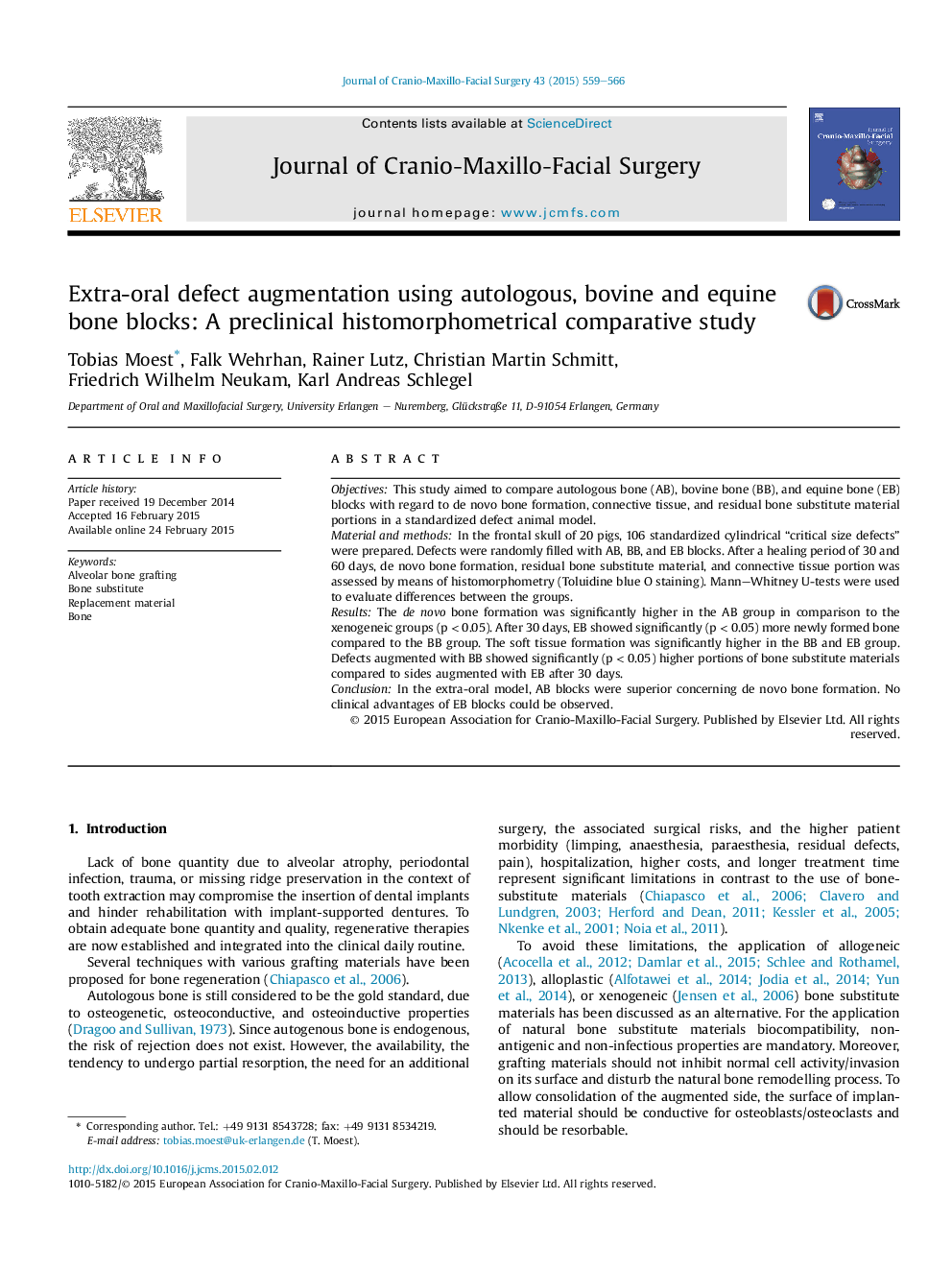| Article ID | Journal | Published Year | Pages | File Type |
|---|---|---|---|---|
| 3143193 | Journal of Cranio-Maxillofacial Surgery | 2015 | 8 Pages |
ObjectivesThis study aimed to compare autologous bone (AB), bovine bone (BB), and equine bone (EB) blocks with regard to de novo bone formation, connective tissue, and residual bone substitute material portions in a standardized defect animal model.Material and methodsIn the frontal skull of 20 pigs, 106 standardized cylindrical “critical size defects” were prepared. Defects were randomly filled with AB, BB, and EB blocks. After a healing period of 30 and 60 days, de novo bone formation, residual bone substitute material, and connective tissue portion was assessed by means of histomorphometry (Toluidine blue O staining). Mann–Whitney U-tests were used to evaluate differences between the groups.ResultsThe de novo bone formation was significantly higher in the AB group in comparison to the xenogeneic groups (p < 0.05). After 30 days, EB showed significantly (p < 0.05) more newly formed bone compared to the BB group. The soft tissue formation was significantly higher in the BB and EB group. Defects augmented with BB showed significantly (p < 0.05) higher portions of bone substitute materials compared to sides augmented with EB after 30 days.ConclusionIn the extra-oral model, AB blocks were superior concerning de novo bone formation. No clinical advantages of EB blocks could be observed.
